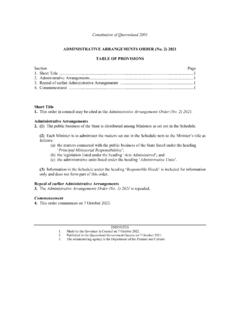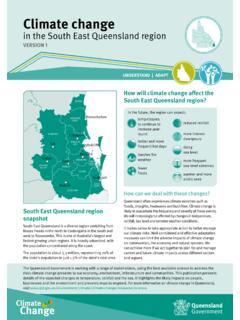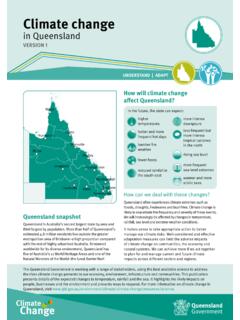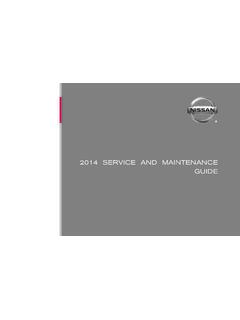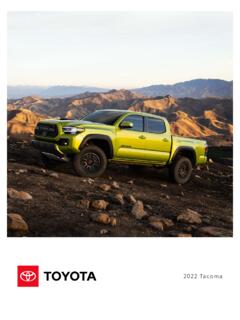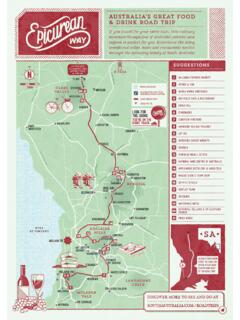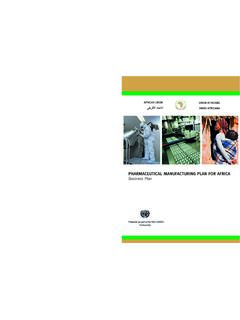Transcription of Collecting and preserving plant specimens, a manual
1 Collecting and preserving plant specimens, a manual Second Edition Queensland Herbarium August 2016 v Department of Science, Information Technology and Innovation Prepared by Tony Bean Queensland Herbarium Science Delivery Division Department of Science, Information Technology and Innovation Brisbane Botanic Gardens Mt Coot-tha, Mt Coo-tha road, Toowong Brisbane QLD 4066 The State of Queensland (Department of Science, Information Technology and Innovation) 2016 The Queensland Government supports and encourages the dissemination and exchange of its information.
2 The copyright in this publication is licensed under a Creative Commons Attribution Australia (CC BY) licence Under this licence you are free, without having to seek permission from DSITI, to use this publication in accordance with the licence terms. You must keep intact the copyright notice and attribute the State of Queensland, Department of Science, Information Technology and Innovation as the source of the publication. For more information on this licence visit Disclaimer This document has been prepared with all due diligence and care, based on the best available information at the time of publication.
3 The department holds no responsibility for any errors or omissions within this document. Any decisions made by other parties based on this document are solely the responsibility of those parties. Information contained in this document is from a number of sources and, as such, does not necessarily represent government or departmental policy. If you need to access this document in a language other than English, please call the Translating and Interpreting Service (TIS National) on 131 450 and ask them to telephone Library Services on +61 7 3170 5725 Citation Queensland Herbarium, (2016).
4 Collection and preserving plant specimens, a manual . 2nd edition. Department of Science, Information Technology and Innovation, Brisbane. August 2016 Document title i Contents Introduction .. 1 Why Collect? .. 1 Before you collect .. 1 Safety .. 2 Commonly used equipment .. 2 Selecting the plant 3 Handling plants during collection .. 4 Step-by-step plant Collecting and pressing .. 5 Data to be recorded in the field .. 10 Drying specimens .. 10 Writing a final label to accompany the specimen.
5 11 References .. 12 Appendix A. Collecting Weeds .. 13 Appendix B. Notes on the plant parts that need to be collected to identify some flowering plant families and groups .. 15 Appendix C. Collecting difficult plant groups .. 16 List of figures Figure 1. Find a specimen that is representative of the existing population. Collect both flowers and fruit if available.. 5 Figure 2. Use secateurs for a clean cut of the stem. Collect two specimens if you wish to retain one sample for yourself.. 5 Figure 3.
6 Every specimen and its duplicates should be tagged. Jeweller's tags are used by most botanists. Write your name or initials and a unique collection number on one side, and the date and site number on the other side. Use a pencil or waterproof pen.. 6 Figure 4. Attach tags securely to each specimen.. 6 Figure 5. Consider how the pressed specimen will appear. Its form at this time largely determines its ultimate appearance. Unnecessary twiggy shoots and excess material may be cut away.. 7 Department of Science, Information Technology and Innovation ii Figure 6.
7 Flatten out the specimen by closing the day-press and securely attaching the straps (in this case, Velcro straps).. 7 Figure 7. Record the latitude and longitude of the site using a GPS unit. Alternatively, mark your position on a map, and record the grid reference.. 8 Figure 8. Record site/habitat data (locality, soil/geology, vegetation type, associated species) and individual specimen data (habit, flower colour, abundance) in a notebook. All notes should be recorded at the Collecting site and not at a later time.
8 8 Figure 9. Example of a mounted and labelled herbarium specimen. (Hymenachne amplexicaulis). 9 Document title 1 Introduction The Queensland Herbarium is the centre for research and information on Queensland ecosystems, plants, fungi and algae. The Herbarium, located in the Brisbane Botanic Gardens, Mt Coot-tha, houses more than 800,000 dried pressed specimens. We provide a plant identification and information service to the public. This manual has been written to assist those requiring plant identifications, and to anyone intending to contribute to the herbarium s collection.
9 Why Collect? Herbarium specimens are used for a variety of purposes. They: allow and support accurate identification of plants, algae, lichens and fungi provide a permanent record for a species occurring at a particular time and place form the basis of reliable distribution, habit and habitat information document the introduction and spread of invasive weeds over time are the reference point for the application of the scientific names provide the basic biological material for taxonomists.
10 Ecologists and other researchers serve as vouchers for seed collections, toxicological cases, biochemical analyses and biodiscovery. Voucher specimens Some herbarium specimens are known as a voucher specimens . Voucher specimens serve as a basis of scientific study. Voucher specimens are collected from taxa that are the subject of research or investigation, generally resulting in a publication in a scientific journal or report. Their importance cannot be over-emphasized. If lodged in a recognised herbarium, they will endure in the collection for many years, and their identity can be checked and verified at any future time by linking it with the voucher reference in the publication.




